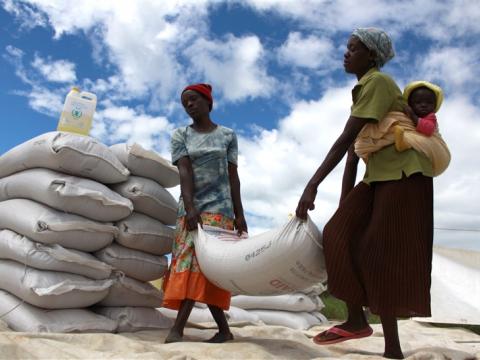How partnerships can help us overcome humanitarian challenges

How partnerships can help us overcome humanitarian challenges
According to the UN High Commissioner for Refugees Antonio Guterres we have never before seen so much human misery in the UNHCR’s 64-year history. By the end of 2013, conflict-related displacement saw more than 51 million people forced to leave their homes. Guterres also emphasised that as each year passes, we are seeing more people forced into longer periods of exile and requiring longer times for recovery.
We are also seeing man-made and natural disasters become more complex, and changing trends and population demographics show that urban populations will increase 200% by 2050. More than 40% of them will be children. By 2025, 7.5% of the global population will be in extreme poverty.
Helping communities to cope and recover from increasingly complex disasters in fragile and urban contexts is a significant challenge.
Partnerships that facilitate resource sharing, skills’ development and innovation for sustainable disaster management are integral to World Vision’s Disaster Management – DM 2020 strategy.
Partnering to make a difference
In December last year, I was part of a group of representatives from nearly 20 humanitarian, private sector and UN agencies who came together for a roundtable organised by World Vision. The group recognised the valuable role of cross-sector collaboration and partnerships in helping humanitarian agencies to cope with disasters and make a difference to lives.
The goal of the initiative is to have transcending transformational relationships that also provide mutual benefit for stakeholders, particularly the most disadvantaged children and their families and communities prone to or affected by disasters. We also agreed that a stronger focus on these kind of strategic engagements are not only feasible, but long overdue!
“Today’s humanitarian emergencies are beyond anything we have experienced in living memory. Unless we urgently change the way we tackle them, the world will become an increasingly difficult place to live for millions of people who have already lost almost everything.”
Collaboration and longer-term and more formally structured partnering can take different shapes and forms, from transactional (philanthropic giving and limited co-ownership) to transformational (co-creational initiatives with longer-term accountability and mutual benefit).
According to UNOCHA reports, 78% of the private sector wants to engage with communities to address crises, but very few are actually involved and over 60% of the relatively limited ongoing partnerships are ad-hoc.
Traditionally relationships between business, NGOs and people have involved a business giving to NGOs, who then distribute to people in need, or NGOs distributing resources to people (such as cash) who then buy the supplies they need from a business.
The fact that many local businesses are part of communities and are also affected by disasters is rarely acknowledged. Their potential to help strengthen preparedness, support emergency response and speed up recovery and rehabilitation efforts has often been overlooked.
World Vision’s recent analysis of private sector collaboration in East Africa “Beyond Gift-in-Kind” proposes that business, NGOs and people are equal stakeholders, and that all parties can contribute to, and benefit from, effective partnerships. This increases opportunities to co-create products and services that are relevant innovative and drive local engagement, ownership and support community resilience.
There is increasing global awareness about the different benefits that multi-stakeholder partnerships bring to the table. It is essential for humanitarian and development actors to increase dialogue among and with communities, and take concerted action to achieve what many term as “double-bottom-line” – social impact as well as (local) business profit.
This increased awareness is alongside a focus on the role of business in the post-2015 Sustainable Development Goals or preparatory consultations towards the World Humanitarian Summit in 2016 – which has the sub-theme “power of business in emergencies”.
Private Sector-NGO-people partnerships
Based on our research, we’ve identified the following actions required to facilitate effective private-NGO-people partnerships. We must:
- Enhance contextual and situational awareness. This includes making an effort to understand different terminologies used by business and traditional humanitarian actors through continuous dialogue.
- Develop information sharing systems, understand each other’s expectations and objectives to allow for joint analysis and improve decision making.
- Ensure pre-positioning of cross-sector relationships, for business to better understand community needs, and for communities and NGOs to better understand business opportunities to address disaster management challenges.
- Improve coordination with other efforts by segments of the private sector.
- Leverage the fact that each partner has unique skills, expertise and other resources on offer that complements the other partner’s need. Joining these efforts can represent a win-win opportunity at all levels (local, regional, global).
As we look towards a future of increasingly complex disaster management and sustainability, reaching the most vulnerable will be a substantial challenge for humanitarian agencies. Private partnerships can help address this challenge and provide critical mechanisms and resources in disaster planning and recovery.